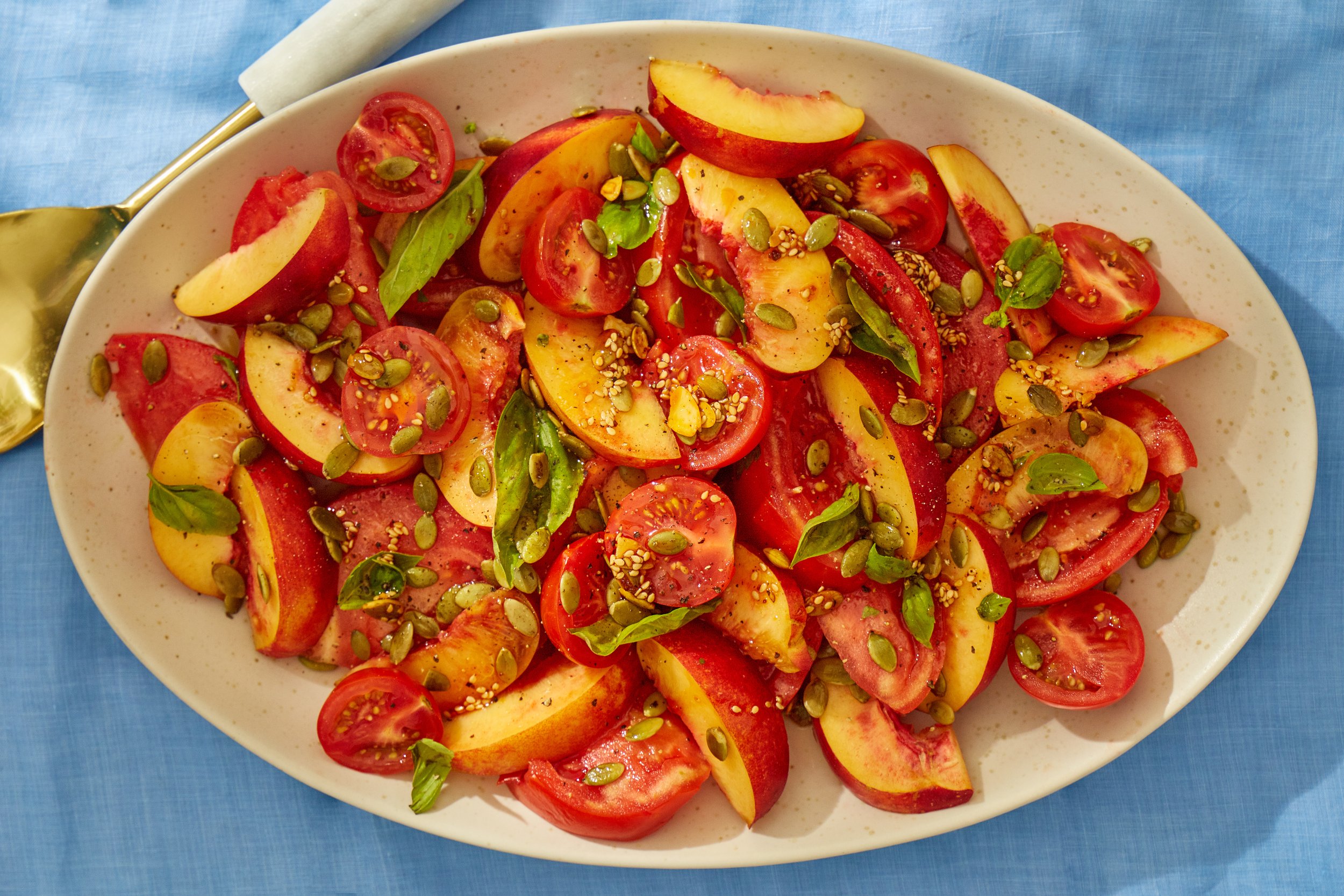Choosing Backgrounds for Food Photography
Before I get to work on any project, for clients or for fun, I make a shot list. Sometimes this document is a formal spreadsheet, and other times, it’s just scribbles in a journal, but no matter how casual it is, one thing is always addressed: what background I’m using in my photography.
Why Backgrounds Matter in Food Photography
Often, choosing a backdrop for my food photography is the first thing that I do when I’m planning out a photo. Why? Because backgrounds influence the way that the rest of the photo looks like more than any other element. Props come and go, styled food can die and be replaced, but backdrops are forever. They’re the most permanent element of a photo—because the entire photo is built on top of it—and they’re the hardest to swap out if you change your mind. Swapping a backdrop means taking the scene apart and building it back up piece by piece.
I’m going to let you in on a little secret: 85% of the time, if I’m not loving how a photo is looking, it’s because of the backdrop. I always tell clients that if something feels off, the first thing we should evaluate is the background. That’s how much it matters! Let’s dive into the types of backgrounds that you can use for photos of food and food products.
Types of Backgrounds for Food Photography
Wooden Surfaces:
In the last few years especially, the rustic look has been extremely popular in food photography. Wooden surfaces play well with this feel—they make the photo look like it’s been shot on a table and evoke the rustic, homemade, organic feel that many of these photographers are going for.
While some photographers use vinyl backdrops printed with wooden textures, there are also plenty of shops where you can buy actual textured backdrops, which always look better in photos. I also keep several wooden pieces (old tabletops and pieces of wood projects) in my prop storage, which I use to make look like small tables.
Marble and Stone:
Much like wood backdrops, marble surfaces are an extremely popular choice for food photography. They give a timeless, clean, elegant look to food photography without adding too much personality. Almost every client I’ve ever had has requested marble as a backdrop at some point, and there’s nothing wrong with that at all!
Like the wooden surfaces, there are a ton of options for a marble look: printed backdrops, vinyl backdrops, textured pieces, and actual marble. Of course, the latter is hard to lug around, but I have friends who do it!
Fabric and Textiles:
Fabrics and textiles are my go-to food photography backgrounds. I’m constantly on the lookout for napkins, tablecloths, and other linens to use—in fact, I literally just bought some today! Fabrics are visually interesting, textural, and full of personality.
You’ll often see fabrics incorporated in food photography in the form of a linen that’s gently draped on the table. To me, this is only the beginning! Here are some fun, fabric-forward photos I’ve taken in the past:
How to Choose a Background
Color and Contrast:
First, weight the color of your subject with the color of the background. Choose a background color that complements the food without clashing or taking over. The background should fade into, well, the background! As I mentioned before, the color of the background is the first thing I gut check when something seems off.
Texture and Patterns:
Next, decide if you’re going to use a texture (like wood) or a pattern (a checkered tablecloth). Texture and patterns aren’t always a bad thing—they can add personality and depth. But too much can distract from the subject.
Consistency with Brand Identity:
Lastly, make sure that the background you’ve chosen fits with the feel you’re creating for the photo. If the photo needs to fit within a brand identity, make sure it feels aligned. You can read more about brand identity and how colors and patterns play into that here.





